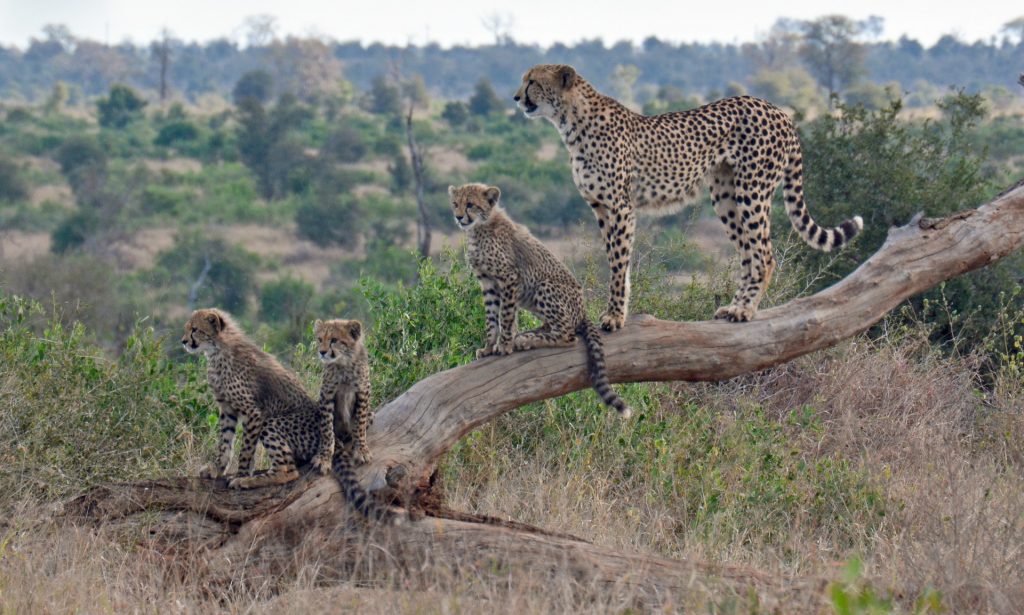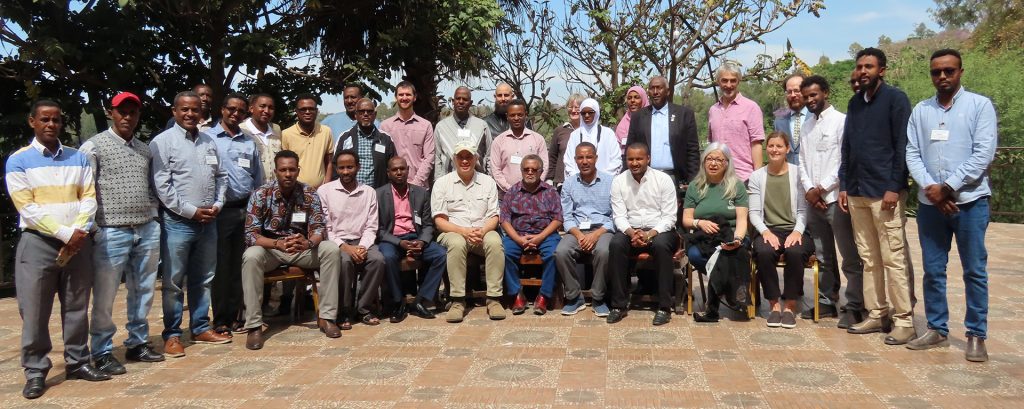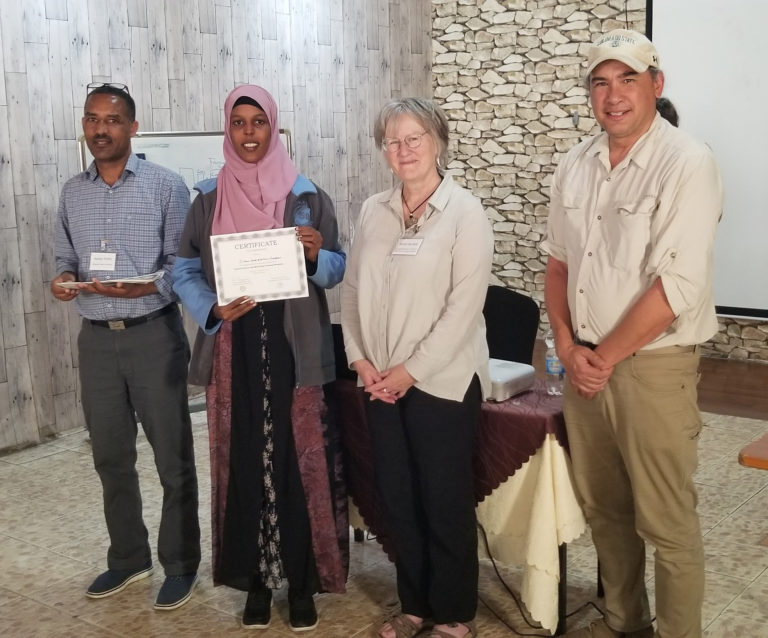
Cheetah diplomacy: Collaborators from clashing nations band together to protect endangered species
Original article by Jayme DeLoss can be found here in CSU Source

There’s a lot of conflict in the Horn of Africa, where disputes over borders, politics, religion and tribes are complicated by drought, famine and economic inequities. But representatives from countries and regions experiencing unrest united for five days earlier this year to protect something they all care about: the cheetah.
A workshop co-hosted by Colorado State University connected 23 wildlife officials from Djibouti, Eritrea, Ethiopia, Kenya, South Sudan, Somalia, Somaliland, Puntland State of Somalia and the Somali Regional State of Ethiopia Jan. 30 to Feb. 3 to collaborate on the conservation of cheetahs and other wildlife.
“It really was inspirational that a common interest such as conserving cheetahs could overcome so many political obstacles in this part of the world,” said Paul Evangelista, a senior research scientist in CSU’s Natural Resource Ecology Laboratory, who leads the project that sponsored the workshop.
The workshop’s success even impressed Evangelista’s colleagues in the U.S. State Department, embassies and United States Agency for International Development, who have tried unsuccessfully to bring these factions together.
By selecting participants who are committed to wildlife and holding the workshop in Ethiopia, which is considered a neutral government in the Horn of Africa, Evangelista and his team were able to build a network of support for wildlife conservation – even in countries where the U.S. researchers are not permitted for security reasons.
“There was a little tension on the first day, I’ll admit,” Evangelista said. “But by the second day, people from different countries that are engaged in conflict were sitting together, having meals and laughing.”
CSU researchers and partners from the Zoological Society of London, Torrid Analytics and the Hirola Conservation Program convened the workshop to connect regional wildlife managers and train them on how to survey for cheetahs and other wildlife.
“Managing wildlife requires regional collaboration; wildlife do not know political or conservation boundaries,” Evangelista said. “The policies and efforts of one country can greatly affect cheetah populations in another country. The same goes with wildlife trafficking laws. So, we felt it was important to get all of these wildlife departments and stakeholders talking to each other, working together and supporting each other.”
The workshop was the first of three and part of a larger project funded by a $1 million grant from the United States Fish and Wildlife Service’s International Affairs Program. Ultimately, its organizers hope to estimate how many wild cheetahs live undetected in the Horn of Africa, help participants develop their own national cheetah conservation plans, and stem the trafficking of live cubs to the Middle East.

Cheetahs’ biggest threat
The cheetah is listed as vulnerable by the International Union for Conservation of Nature’s Red List of Threatened Species and is protected by the Convention on International Trade in Endangered Species of Wild Flora and Fauna. Cheetahs are estimated to inhabit only 13% of their former range in Africa.
Habitat loss is a problem across Africa and the world, but the landscape hasn’t changed much in the Horn of Africa, where conflict has kept development at bay. The biggest threat to the cheetah is illegal trade.
Keeping cheetahs as pets has been a status symbol in the Middle East for thousands of years. Unfortunately, a significant percentage of the cheetah cubs trafficked to the Arabian Peninsula die in transit due to lack of care.
“The sheer number of cheetahs that have been documented in the illegal pet trade in the last five or six years tells us that there’s a significant population out there that was undetected,” Evangelista said.
That silver lining has motivated Evangelista and his colleagues to work with national, regional and local governments in the Horn of Africa to try to quantify and conserve the potentially large undocumented cheetah population.

Training cheetah champions
Workshop participants will apply what they learned to interview their local community members with photos of more than 50 wildlife species. The team hopes to collect thousands of these surveys and corresponding GPS locations to determine which species exist, where they live and the size of the population. The survey covers cheetahs’ predators and prey species to gauge the stability of the cheetah population.
Efforts in this first year of the three-year project will define priority areas where cheetah populations are densest, so resources can be focused on those areas.
“The more conservation strategies we can get in place with our partnering countries and the more we can bring this work to the public, the better our chances are of stemming the trade of not just cheetahs, but all wildlife,” Evangelista said.
Evangelista said he looks forward to finding wildlife unknown to the scientific community in countries and regions that haven’t been adequately surveyed in more than a century.
“It’s exciting when you’re one of the first group of scientists to get to go in and rediscover some of these populations, especially since so many of these species are in peril,” he said.
In the months immediately following the workshop, its participants already have been conducting fieldwork and collaborating with each other. Evangelista and his team have kept in contact with them to provide guidance and support.
“This was what we were hoping for,” Evangelista said. “Their dedication to wildlife conservation and management was really the driver that let us overcome some of the other challenges.”
PCollaborators include Redae Tesfai, Patricia Tricorache and Nicholas Young, research associates with CSU’s Natural Resource Ecology Laboratory in the Warner College of Natural Resources; Kelly Jones, associate professor in CSU’s Department of Human Dimensions of Natural Resources; Sarah Durant and Nicholas Mitchell with the Zoological Society of London; Tomas Maule, director of Torrid Analytics; and Abdullahi H. Ali, founder of the Hirola Conservation Program in Kenya. The project, Combatting Cheetah Trafficking: An Adaptive Management Strategy for Building Regional and National Capacity in the Horn of Africa, is funded by the Species Conservation Catalyst Fund of the United States Fish and Wildlife Service’s International Affairs Program.